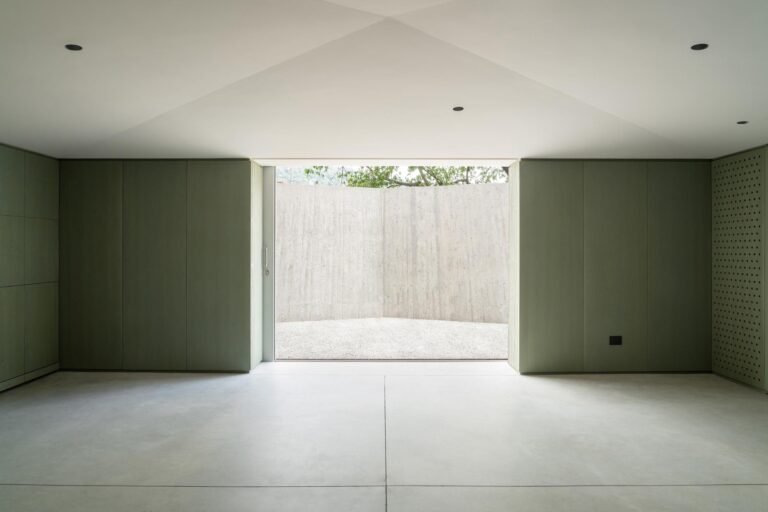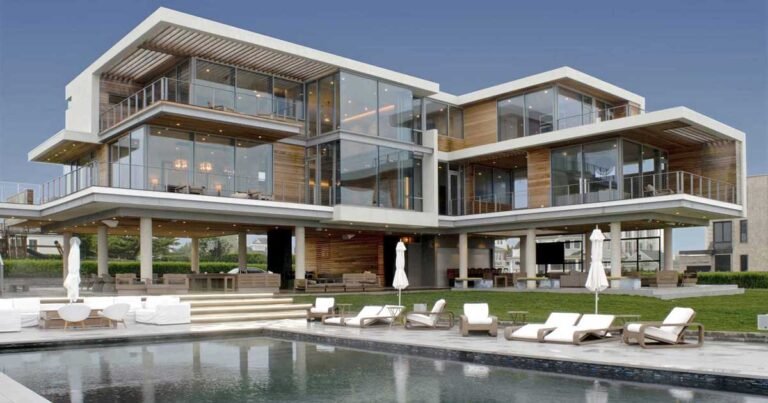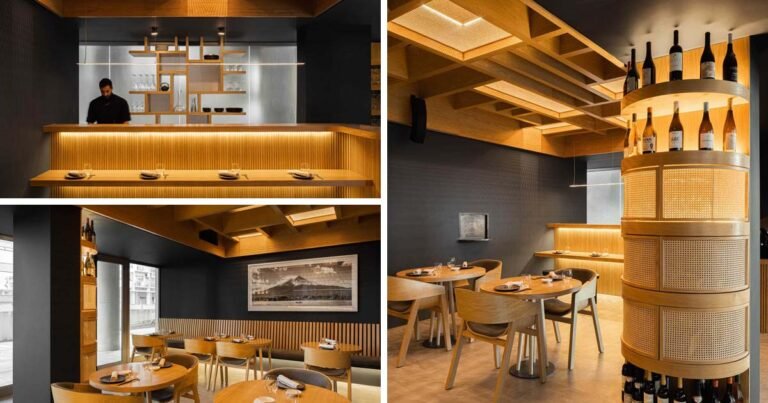hori-zonte cuts into portugal’s panorama to embed its new atmosphere museum
new environment museum as a landmark of gaia
hori-zonte proposes the ‘new environment museum‘ in gaia, portugal, embedding it into its vast rural landscapes. taking shape as a green veil, it is integrated into the undulating landscape, offering a qualified public space for the local community. the underground center aims to stand out, not only for its conceptual approach but mainly for its engagement with the city, its local characteristics, and nature; committing to fundamental vectors such as urban harmony, social and economic endorsement, and smart-bioclimatic design.
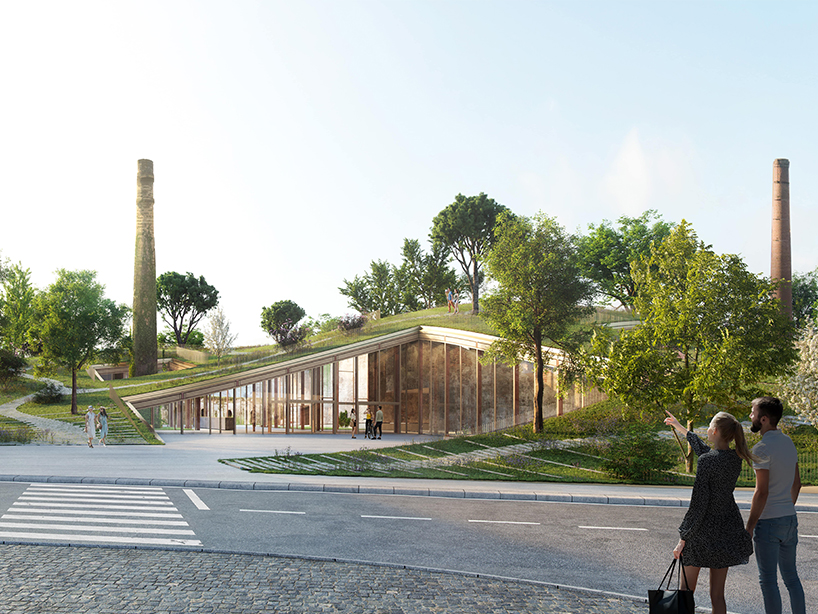
the entrance to the museum is made through several cutouts in the green roof, which bring light inside
all images by hori-zonte
ARCHITECTURAL PORTAL TO NATURE
the final design aims to foster a harmonious relationship between the visitors and the surrounding landscape, honoring the history behind it. wandering the site, one will find reminiscences of the existing structures, monuments, and ruins of the old ceramic production halls: the old chimneys and furnaces pierce the park and museum, becoming part of it. meanwhile, the hilly roof becomes a topography and accessible for everyone, unfolding as a green veil.
the design team sought to form a visual connection, blurring the boundaries between the indoor and outdoor. to achieve this, they perforated the undulating green roof which partially allows light to enter the museum. this way, the park and the center become one, letting nature grow down and enter through the patios, as an active exhibition element.
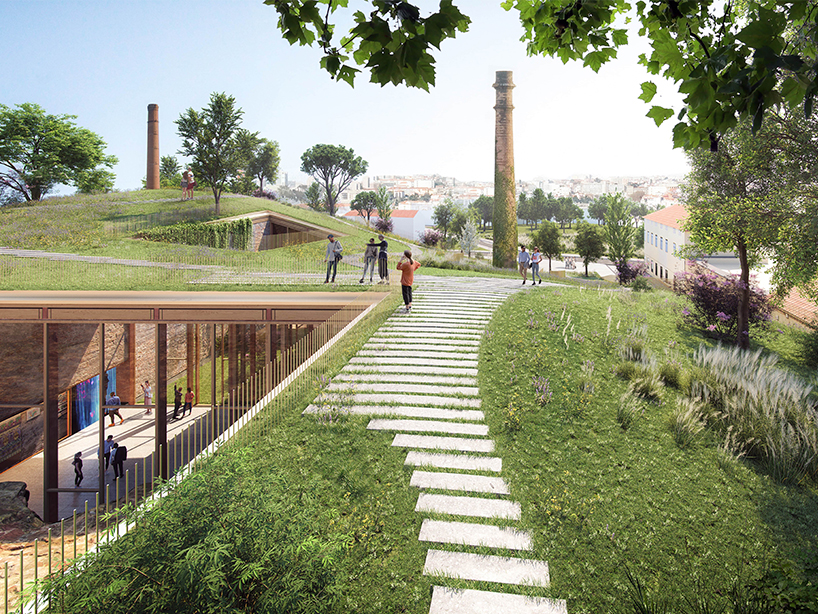
the environment museum’s roofscape: a new park for the city’s inhabitants and a greener outcome to the building’s performance
the museum promotes a temporal dynamism and an assortment of experiences for users throughout the year. but mainly, it seeks to raise the principles of biodiversity and bioclimatic designs. the existing structures of the old ceramic industrial halls and the remaining earth are embedded into the new design. the old brick walls become the new walls of the main exhibition spaces, like the earth, which can be transformed into the green roof’s soil. with this project the architects sought to encourage the reuse, reduction, and reproduction of resources, thinking on a local scale, with responsible and social measures.
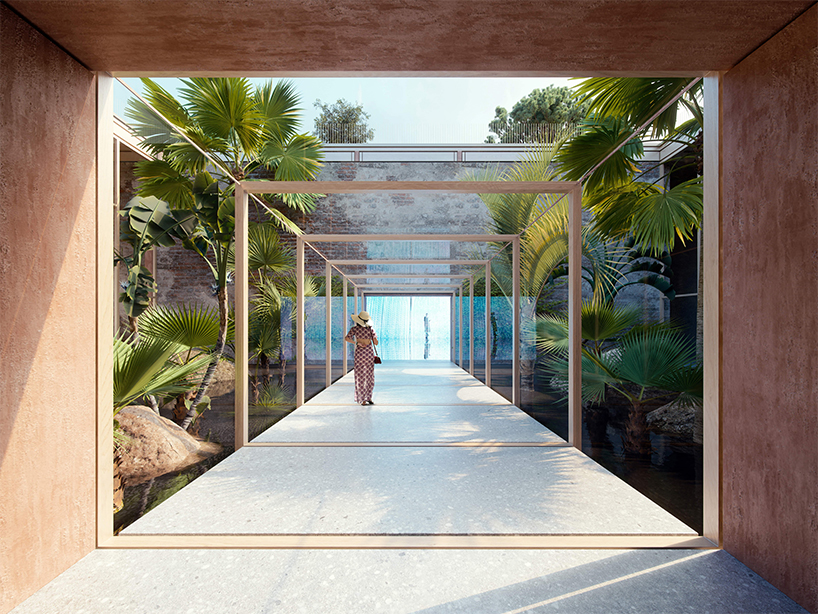
gallery between two exhibition halls. there’s a continuous relation between indoors and outdoors throughout the whole building, connecting the museum with the nature outside
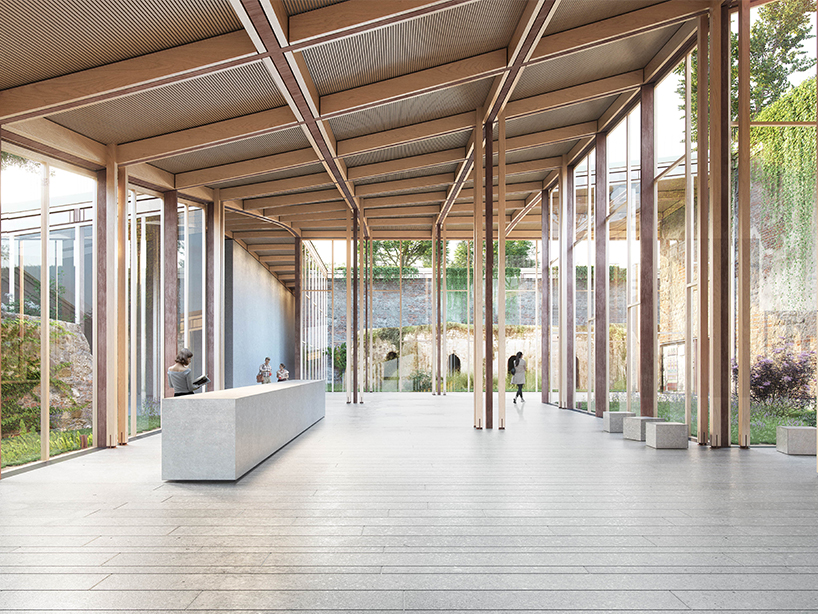
the reception area and its interaction with the park on top, through the several patios


